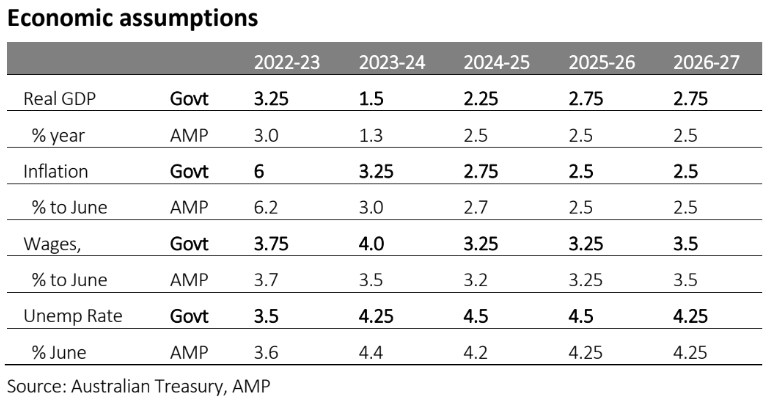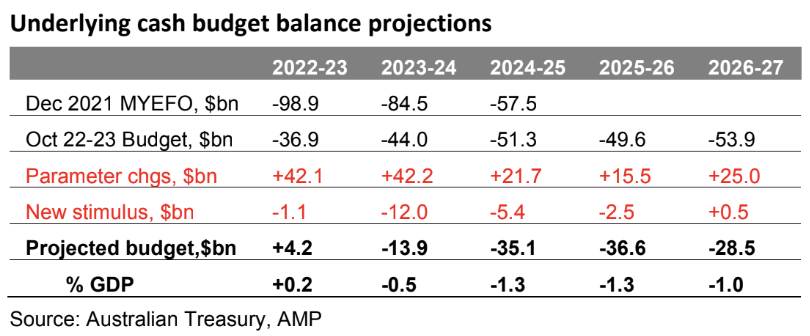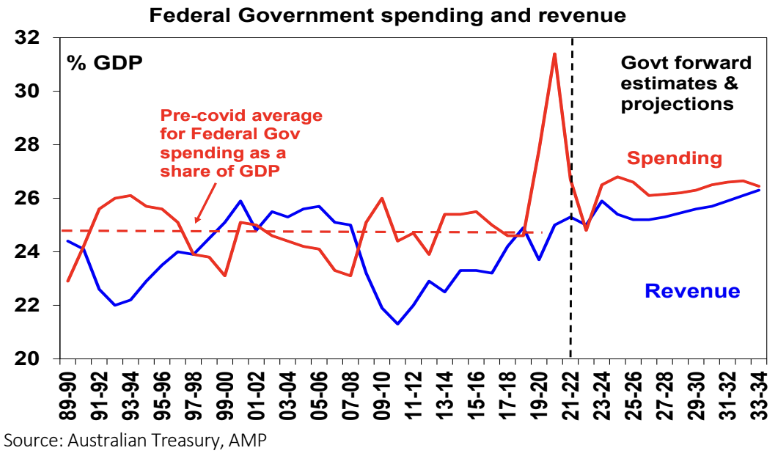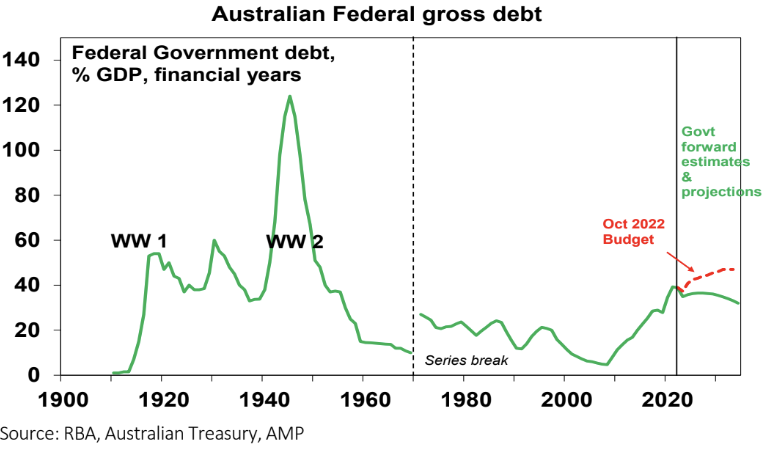Budget 2023: A return to surplus but structural deficits remain
Key budget measures
- $14.6 billion over four years in cost-of-living support for mostly low to middle income households, including $3 billion (shared with states) in one off energy bill relief for 5 million low-middle income households and 1 million small businesses
- An additional $3.5 billion to Medicare over 5 years to allow better access to GP’s through a lift in the bulk billing incentive, cheaper medicines
- A boost to rent assistance, subsidies to move from gas to electric appliances, and increased support for single parents costing
- $1.9 billion over 5 years and a modest increase in Jobseeker with more for over 55s
- Increased spending on aged care partly flowing from a 15% pay rise for aged care workers which will cost $14.1 billion over four years
- A $20,000 instant asset write-off for small businesses;
- A ramp up in defence spending on missiles and submarines, offset by a reallocation of defence spending;
- Some measures to help boost housing affordability – with tax changes to boost build-to-rent housing and wider access to the Home Guarantee Schemes;
- A lift in renewables investment through $2 billion for the Hydrogen industry and incentives for developers to build “greener” houses;
- Measures to support impact investing to tackle social problems;
- $498 million to crack down on vaping and reduce smoking.
- Reform of the Petroleum Resource Rent Tax to raise $2.4 billion over 4 yrs;
- Extension of the GST compliance program, saving $3.8 billion over 4 years;
- A 5% rise in tobacco excise raising $3.3 billion;
- Measures to slow NDIS growth to 8% pa from 13.8% currently;
- The 30% tax on super fund earnings where balances exceed $3 million;
- Increasing the payment frequency of super and lifting compliance.
Economic assumptions
We are a bit less optimistic on growth in the year ahead and hence see higher unemployment earlier. Either way Australia is set to enter a per capita recession. The Government now sees net immigration of 400,000 this year up from a forecast of 235,000 in October, taking population growth to 2% for the first time in 14 years, slowing to 315,000 in 2023-24.
The Government revised up its medium-term iron ore price assumption but only to $US60/tonne. With the iron ore price now about $US105/tonne, it’s still a potential source of revenue upside.

Budget projections – fastest improvement since WW2

Some of the windfall has been spent (see the line called “new stimulus”) but 86% of it out to 2026-27 has been saved. As a result, the budget is now projected to be in surplus for this year – its first since 2007-08, a massive turnaround from the $99 billion deficit projected less than 18 months ago and the fastest improvement as a share of GDP since the end of WW2 when the deficit went from 10.5% of GDP in 1944-45 to 0.8% in 1946-47.
While there is net new stimulus going forward (mainly in 2024-25) due to the cost-of-living measures it turns negative by 2026-27 (as Budget savings kick in) and over the next four years is swamped by the revenue windfall resulting in lower budget deficits going forward.



Assessment
The Budget has a lot commend it: the cost-of-living measures will help ease pressure on the most vulnerable and some (energy, medicine and rent relief) will lower measured inflation; the budget is now back in surplus for this financial year; by “saving” the bulk of the revenue upgrade budget deficits are lower and this cuts interest costs; the Government has slowed structural spending growth (eg in the NDIS) and raised extra revenue; and there is still scope for revenue surprise with commodity price assumptions.
- While some of the cost-of-living measures will directly help lower measured inflation (by around 0.4%), the new fiscal stimulus next financial year of $12 billion risks boosting demand and adding to inflation – but it’s hard to be adamant as overall the Budget is taking more out of the economy compared to the projections last October.
- While the medium-term structural budget deficits have been sharply reduced they are still large – despite this being the Budget in the political cycle to address this issue as next year’s budget will be in the run up to the next election. It’s a bit of a lost opportunity and leaves the budget vulnerable should economic conditions prove weaker than expected and doesn’t provide much hope for actually paying down debt to put money aside for a rainy day.
- In particular, after several years of upside surprise to revenue, the risk is that this reverses in the year ahead if the economy slows more.
- While the rise in Government spending as a share of GDP has been capped it’s still projected to settle at a level well above that seen pre-pandemic thereby locking in a bigger government sector which risks further slowing productivity growth over the medium term.
While the housing measures are welcome, they are unlikely to make much of a difference in the next few years to housing affordability with the supply shortfall intensifying with very high immigration levels.
Implications for the RBA
Implications for Australian assets
- Cash and term deposits: cash and bank deposit returns have improved substantially with RBA rate hikes but are still relatively low.
- Bonds: budget deficits add to upwards pressure on bond yields, but at least they have been lowered near term so there should be no new pressure.
- Shares: the Budget is a small positive for household spending but not enough to offset the negatives impacting the sector and overall there is not really a lot in it for the share market.
- Property: the housing measures are unlikely to alter the property price outlook which is dominated by supply shortages and surging immigration versus the impact of rate hikes. We see roughly flat home prices this year.
- The Australian Dollar: the Budget is unlikely to change the direction for the Dollar.
1 topic

